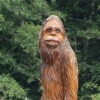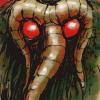This thread is to share some of the findings my research partner, my son, and I have found in the Gifford Pinchot National Forest between Mt St Helens and Mt Adams in Washington State. We are in the process of completing a research paper on our findings which we will be submitting for publishing in the next couple months. However, I wanted to share some of our findings here for those who spend time in the field; to give them additional information to look for, and to utilize in their own field research. There is considerable information which I will be posting as I have time. I do keep a daily log of my time in the field which I would recommend for anyone spending time in the field. It is too easy to forget important or even not so important details later on that may end up becoming important.
My own background is in Wildlife Biology and yes I do have some initials after my name, for those that it matters. But, to me, what matters most is the 50+ years I have spent out in the field; hunting, hiking, fishing, photographing, learning tracking skills, and doing my own personal research. Have I observed a bigfoot in the field? No I have not. However, this evidence and other evidence I have found tells me there is something unknown out there. Just as cougar tracks and kills tell me cougars are out there though I have yet to see one in the wild.
This research is based on three separate sites that we discovered located 7 to 10 miles apart in our study area. We identified some specific behavior in the study of each of these sites, as well as specific tooth impressions in the bones. The forensic evidence of tooth impressions in bone can be used to identify the possible predators that were responsible for the kill. There has been considerable research done in this field to help identify the possible culprit or scavenger of a kill (mostly for human remains). The size and type of predator can be determined by the various impressions they leave in bone with their canines and/or carnassials (carnivore molars).
I will also be posting a control specimen of an elk we killed during hunting season and left the ribcage, spinal column, and pelvis after removing the quarters and boning out the rest. I returned to this specimen three times over a period of 6 months to observe and photograph its condition.
These specific finds began in early 2013 when my research partner found several deer in one location which had been killed, disarticulated, eaten, and the bones stacked. The bones were stacked in front of a log; as if whatever had sat down, ate its meal, and stacked the bones in front of it.
Original bone stack as found by my research partner.
Bones collected from stack.
Tooth impressions found on a couple of the rib bones.
Some of the references used in our research:
Foust, Jennifer L. 2007. The Use of Tooth Pit and Tooth/Jaw Measurements to Identify Carnivore Taxa Responsible for Damage on Scavenged Bone. Master of Arts Thesis. University of Montana.
Murmann DC, Brumit PC, Schrader BA, Senn DR. 2006. A Comparison of Animal Jaws and Bite Mark Patterns. Journal of Forensic Science 51(4):846-860.
...More to come.



